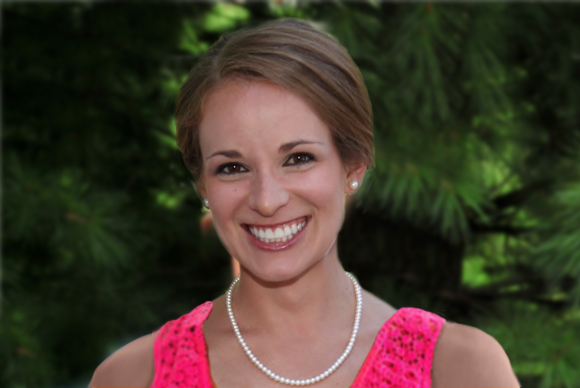
Can you tell us a little about yourself?
My home is Richmond, Virginia, where my own little family will be moving this summer. My hobbies include dance, yoga, skiing, and crocheting. I attended the University of Virginia, where my studies focused on biology and dance. Following my time there, I went to the Virginia Commonwealth University School of Dentistry and am currently an orthodontic resident at the University of Tennessee in Memphis. My husband, David, practices general dentistry in Memphis, and nearly one year ago, we welcomed our precious daughter, Ella.
We currently live on an island on the Mississippi River. My favorite thing is watching the spectacular Memphis sunsets every night on walks with David, Ella, and our two dogs. The funny thing about these walks is that I end up carrying my sweet girl while the dogs relax in her stroller!
Why are you pursuing a career in orthodontics?
Growing up with my dad as a physics professor and artist and my mom as a maternity nurse, it only made sense to combine the arts and sciences with patient care and become an orthodontist. I have my own orthodontist to thank for recognizing my enthusiasm and supporting my goals since I was his patient.
What has surprised you the most during your orthodontic education?
I learned that orthodontics can impact a person’s entire well-being. One of our incredible faculty members picked up on a constricted airway and referred the patient for evaluation. Through medical evaluation, it was determined he had sleep apnea and required continuous positive airway pressure ventilation. As part of an interdisciplinary team, the treatment plan involved a maxillomandibular advancement. It is inspirational to talk to the patient about how his life and physical well-being have changed for the better. He thanks his orthodontist for being the first to catch it all.
What, so far, has been your most rewarding orthodontic experience?
My most rewarding experience can be summarized by a simple moment. During final records, I was trying to take the frontal facial photo at rest, but I couldn’t get it. My adorable patient couldn’t stop giggling for the picture because “smiling’s my favorite now!” You can’t get much more rewarding than that!
Please briefly describe your most difficult residential case.
My most difficult case required a change of plan and expectations. A patient with a severe anterior open bite had been set up to have surgery and, although it was previously approved, her insurance was no longer going to cover it. She had emotionally given up on ever having a beautiful smile. When I received her as a transfer patient, she came in ready to have her braces removed and be done. I asked her to please stick with me, so we could at the very least remove the decompensations that made the original open bite even more significant. I went ahead and removed her braces and placed several temporary anchorage devices (TADs) with a bite-closing appliance. Within six months, we had closed her bite 11mm. Does she have the smile she originally planned? No. Does she have a smile she is happy with? Yes.
What do you think orthodontics will look like in 10 years?
The shift in what orthodontics looks like will be most affected by the use of three-dimensional imaging and an increase in orthodontic providers. Better visualization of the teeth and bone may change the way we plan treatment on a daily basis. The evolution of large dental offices will also impact orthodontics. Group practices will hopefully enable easier interdisciplinary communication for comprehensive patient care.